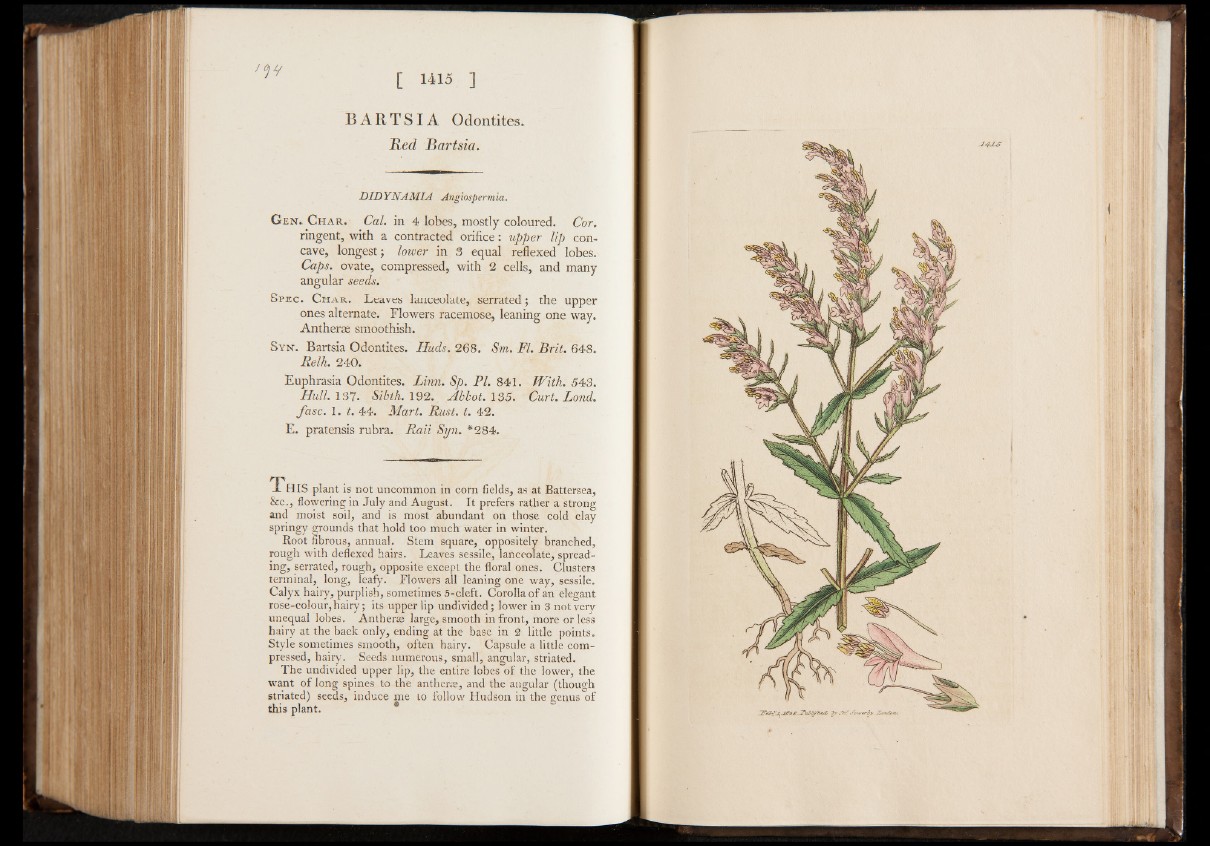
BARTSIA Odontites.
Red Bartsia.
DID YNAMIA Angiospermia.
Gen. Char. Cal. in 4 lobes, mostly coloured. Cor.
ringent, with a contracted orifice : upper lip concave,
longest; lower in 3 equal reflexed lobes.
Caps, ovate, compressed, with 2 cells, and many-
angular seeds.
Spec. Char. Leaves lanceolate, serrated; the upper
ones alternate. Flowers racemose, leaning one way.
Antheræ smoothish.
Syn. Bartsia Odontites. Huds. 268. Sm. FI. Brit. 648.
Relh. 240.
Euphrasia Odontites. Linn. Sp. PI. 841. With. 543.
Hull. 137. Sil'th. 192. Abbot. 135. Curt. Lond.
fasc. 1. t. 44. Mart. Rust. t. 42.
E. pratensis rubra. Raii Syn. *284.
T H I S plant is not uncommon in corn fields, as at Battersea,
&c., flowering in July and August. It prefers rather a strong
and moist soil, and is most abundant on those cold clay
springy grounds that hold too much water in winter.
Root fibrous, annual. Stem square, oppositely branched,
rough with deflexed hairs. Leaves sessile, lanceolate, spreading,
serrated, rough, opposite except the floral ones. Clusters
terminal, long, leafy. Flowers all leaning one way, sessile.
Calyx hairy, purplish, sometimes 5-cleft. Corolla of an elegant
rose-colour,hairy; its upper lip undivided; lower in 3 not very
unequal lobes. Anther® large, smooth in front, more or less
hairy at the back only, ending at the base in 2 little points.
Style sometimes smooth, often hairy. Capsule a little compressed,
hairy. Seeds numerous, small, angular, striated.
The undivided upper lip, the entire lobes of the lower, the
want of long spines to the anther®, and the angular (though
striated) seeds, induce me to follow Hudson in the genus of
this plant.
-1 4 - isr